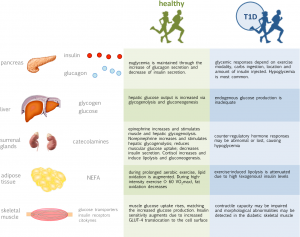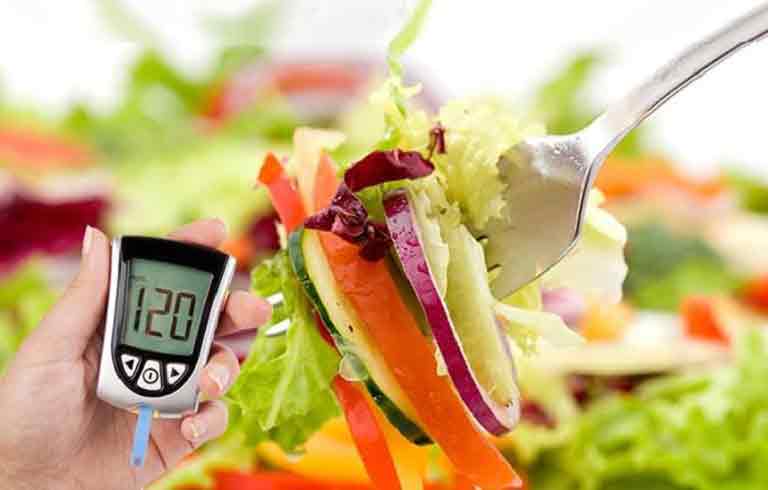Most people worldwide have a misconception which is: Diabetic Patients live in hell. This concept has aroused due to the daily monitored Blood Glucose Level. Today, I decided to illuminate the truth about the diabetic diet as well as an exercise through which diabetic patients can see life more comfortable 😊.

If you have diabetes, your specialist will probably recommend that you see a dietitian, through which you will be able to control your blood glucose level, manage your weight, and control some diabetic consequences such as hypertension and increased cholesterol levels.
Let me clarify the main points considering diabetic patients diet
Diet for diabetic patient
A diabetes diet depends on eating three meals every day on ordinary occasions. This causes you better use the insulin that your body delivers or gets through a mediation. There is a different kind of foods that can improve your organs’ activity, as well as provide a delicious plate.
To simplify your meal plan, there are 2 ways most commonly used for diabetic diet, either the plate method or carbohydrate counting, let’s discuss both so that you can pick what suits you more.
Plate method
The plate method focuses on the portion sizes perspective. It shows the quantity of every food category you should eat among carbohydrates, vegetables, and proteins. It is a preferable lunch and dinner.

- Pick your delicious non-starchy vegetables from the list below and add it in half of your plate.
- Choose your protein whether lean meat, fish, or chicken on one-quarter of your plate.
- Add your favorite healthy carbohydrates in the last quarter of the plate.
- Add a bowl of fruits from your diet list, as well as a glass of light milk.
Carbohydrate Counting
Carbohydrate counting focuses on tracking the carbohydrates amount you digest daily in whatever form it is. This way can help you calculate the amount of Insulin required daily.

Because, carbohydrates are the privilege through other food categories to turn into glucose, increasing your blood glucose level. Both diabetic management and exercise control the carbohydrate counting. Thus, it differs from one person to another. In carbohydrate counting, you need to know each food contains how many grams of carbohydrates; to easily calculate the administered amount.
List of foods that lower blood sugar
- Vegetables: There are 2 types of vegetables, the best of them all is non-starchy such as broccoli, carrots, greens, peppers, cucumber, spinach, tomatoes, kale… etc. for the starchy vegetables, it includes potatoes, corn, and green peas. A study done in 2017 has demonstrated that the prevalence of type 2 diabetes is twice lower in vegetarians as compared to the normal population.
- Fruits: Citric fruits like Orange, strawberries, and grapes, as well as melon, berries, apples, bananas…. Etc, are all good for Diabetics. Because they provide multiple vitamins, minerals, as well as antioxidants.
- Carbohydrates: It is preferable to use whole grains as your source of carbohydrates. Such as oat, Cornmeal, Basmati rice, whole grain bread, pasta…. Etc. Because they are whole grains that are considered complex carbohydrates. Whole grain and whole wheat are lower than white bread and rice, on the glycaemic index scale, which is a scale showing how quickly this food increases blood glucose level.
- Protein: You have a variety of proteins from meat such as lean meat; fish such as salmon, sardines, mackerel, and tuna; and chicken such as breast chicken or turkey. Fish in specific contains Omega-3-Plus which is categorized as good fats. It is preferable to include good fats in your diet around 2 times every week. Because, they can help in lowering your blood cholesterol levels; preventing coronary heart diseases.
- Low-fat Dairy products: Milk, yogurt, parmesan cheese, low fat, and light cheese. Also, make sure to avoid the following list, to avoid blood glucose level strike
Unfortunately, heart diseases and stroke are risk factors from Diabetes consequences. This occurred due to the hardening of arteries wall that leads to complete clogging. Thus, to avoid these conditions you shall exclude saturated fats, trans fats, and sodium from your diet.
Here are the examples of food you should Stay away from
- High-Fat Dairy Items
- Animal Proteins such as Margarine, Beef, Franks, Hotdog, and Bacon.
- Handled Bites.
- Heated Products.
- Fried Foods.
- Salty Foods.
- Processed Sweets like candy, ice creams, and backed well because they are made of simple carbohydrates, which give high blood glucose Level strike.
- All sugary beverages like soda, energy drinks, and even fresh juices with added sugars… etc.
Sample menu for diabetic diet
To simplify this and make it more interesting, I have gathered 3 sample menus for diabetic patients, diabetic diet breakfast, lunch, dinner, and snack. This can help you invent your delicious plate😉.
Sample 1
- Breakfast: A slice of Whole-wheat bread, 1/2 cup shredded wheat cereal with a cup of light milk, 1 avocado, and coffee.
- Lunch: Roast beef sandwich with lettuce, light American cheese, tomato and mayonnaise, an apple as a fruit, and water
- Dinner: Salmon, 1/2 teaspoons vegetable oil, 1 baked potato, 1 chopped carrot, a bowl of green beans, unsweetened iced tea, and milk
- Snack: A bowl of popcorn
Sample 2
- Breakfast: A boiled egg with bread and bowl of fruit salad containing strawberries, bananas, and orange.
- Lunch: 1/3 cup brown rice, beans, chopped spinach, chopped tomatoes, bell peppers, light cheese, fresh salsa as the sauce
- Dinner: 1 cup of lentil pasta, veggie tomato sauce with garlic, mushrooms, greens, zucchini, and eggplant, lean turkey, one slice honeydew.
- Snack: 20 baby carrots with 2 Tablespoonful of hummus
Sample 3
- Breakfast: 1 bowl oatmeal, 7 blueberries, 5 almonds, and chia seeds
- Lunch: Salad contains fresh spinach, 2 chicken breasts, chickpeas, half small avocado, 7 strawberries, shredded carrots, dressing
- Dinner: whole wheat couscous, half bowel sautéed eggplant, 1 tomato, 5 olives, balsamic vinegar as dressing, fresh basil.
- Snack: cottage cheese with 1 peach.
Exercise for diabetic patient
Because exercise is one of the numerous ways for burning up glucose and fats, it can be extremely important if you are a diabetic patient. First, you shall stay hydrated, by drinking water before, during, and after Exercise. After that, let’s lock up some different tips for diabetic patients before exercise😉.
-
Predict Low Blood Glucose level
Since exercise brings down your blood glucose level, you ought to secure yourself against diabetic hypoglycemia. It is predicted to have hypoglycemia within 24 hours after exercise. Thus, you shall lower your insulin dose before heading to exercise.
-
Avoid Exercise If Your Blood Glucose Level is High
If you have type1 diabetes, Avoid Exercise when your Blood Ketones level is high.

Ketones are chemicals formed when your blood glucose level is excessively high, and your Insulin level is extremely low. This is called diabetic hyperglycemia. In this case, Exercise may increase your blood glucose level even more.
-
Watch your feet and Avoid Wounds
People with diabetes may have issues with their feet. Because their high blood glucose levels cause poor bloodstream and damage the nerve endings. Thus, it is preferable to wear comfortable shoes and take care of your feet before, during, and after Exercise.
Exercise for diabetic patient
Most sorts of exercise can enable you to deal with your diabetes. Not all exercises are safe for diabetic patients, thus, it is preferable to ask your health care group what physical exercises are ok for you. Here are some approved safe exercise for diabetic patients.
-
Aerobic Exercise
Aerobic exercise is a workout that makes your heart beat quicker and influences you to inhale more diligently. You should go for doing high-impact practice for 30 minutes every day. Jumping rope, jogging, running, walking, stationary bike, elliptical machine, and Zumba classes; are all examples for aerobic exercise.
-
Strength Exercise
It is a light or moderate exercise that builds muscle and helps keep your bones strong. Remarkably, strength training is significant for the two people. You consume calories according to your body muscles; The more muscles you have, the more burning fat you gain. Consuming more calories can enable you to lose and keep off added weight. Dumples, elastic bands and weight machines are all examples for a strength training exercise
-
Stretching
Consider stretching exercise at the beginning and the end of every workout. This type of exercise increases your flexibility and relieving your sored muscles after exercise. The most common stretching exercise is Yoga; through which you control your breath as well as moving all your body parts. It seems easy for most of us but practically it needs a way higher effort to do the right position.
Thus, yes you might be diabetic, but this is not the end of the world. You still can enjoy your life through a delicious and healthy diet, as well as doing the proper exercise that suits you. So, Smile. Because your illness is one of the simple manageable diseases.
Check all our Diabetic blog posts through Fitnesshealthforever.




I follow the same kind of diet and yes it really works.
Awesome information